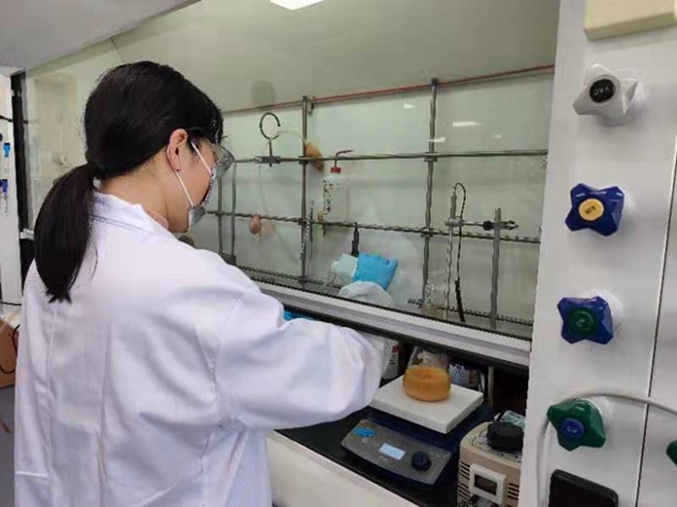14 Aug 2023
With the rapid development of 5G technology and wireless devices, all areas of our lives have undergone great transformations. However, the consequential electromagnetic wave pollution has become the fourth largest source of pollution after air, water and noise pollution. To address these issues, researchers have been working on Electromagnetic Wave (EMW)—absorbing materials that can convert electromagnetic waves into heat or other forms of energy.
Recently, Professor Li Yang's team of the Department of Chemistry at Xi’an Jiaotong-Liverpool University has successfully prepared hollow SiC@MnO2 composites with tuneable core size and shell thickness. The effective EMW absorbing bandwidth of hollow SiC@MnO2 can reach 5.71GHz with a core size of 360nm and a shell thickness of 90nm at only 1.8mm, which leads to an improvement of 225% compared to pure hollow silicon carbide (H-SiC). The results were published in Chemical Engineering Journal, an international research journal, with an impact factor of 15.
SiC is characterized by its high temperature resistance, corrosion resistance, oxidation resistance, low density, high strength and good chemical inertness, yet the EMW absorbing property of pure SiC is poor. To further expand the application of SiC in the field of EMW absorption, researchers seek to enhance the wave-absorbing properties of SiC through structural design and compounding with other materials. However, a uniform monodisperse hollow spherical core–shell structure of SiC and its composites are rarely studied.

The research team successfully prepared uniform monodisperse H-SiC after extensive experimental design, process mapping, analysis of preparation mechanism and performance characterization. However, for pure H-SiC composites, the highest tested filling ratio is only 20wt% due to its low density. The low percentage of active ingredient results in poor EMW absorption performance, and the effective absorption bandwidth is only 2.54GHz.
With the aim of further improving the EMW absorbing performance of the material and increasing the practical application value of the material, the research team introduced MnO2, which has advantages of low toxicity, abundant resource, simple preparation methods and significant dielectric losses. Through the formation of composite material, the interfacial polarisation and conductivity of the material are enhanced, resulting in its improved EMW absorbing performance.
The team started with an in-depth discussion on the preparation mechanism of MnO2, and prepared a series of hollow SiC@MnO2 nanospheres with tuneable core size and shell (40nm-110nm) by adjusting the proportion of MnO2 added. The results of EMW absorbing performance tests show that the composite exhibits the best performance when the shell thickness is 90nm.
Then the team moved on to adjust the inner diameter of hollow SiC@MnO2 nanospheres, and prepared a string of monodisperse composites with shell thickness of 90nm and core size from 300nm to 470nm. After comprehensive tests and theoretical analysis of the EMW absorption loss, the product has the optimal performance with the core of 360nm, which is 225% higher than its H-SiC counterpart.
“The successful synthesis of monodisperse hollow SiC@MnO2 nanospheres, on one hand, improves the electromagnetic wave-absorbing performance of materials while reduces the density, realizing the comprehensive property requirements of thinness, lightness, breadth and strength; On the other hand, the monodisperse sphere structure ensures the homogeneity, consistency, and stability of the material in practice, providing a more reliable solution to the electromagnetic interference within the equipment and its radiation on living beings, which has profound significance in reality and broad prospects for practical applications.” Professor Yang said.
By Luyao Wang
Material provided by Professor Li Yang
14 Aug 2023







